May 24, 2023 feature
This article has been reviewed according to Science X's editorial process and policies. Editors have highlighted the following attributes while ensuring the content's credibility:
fact-checked
peer-reviewed publication
trusted source
proofread
Progressive quantum leaps—high-speed, thin-film lithium niobate quantum processors driven by quantum emitters
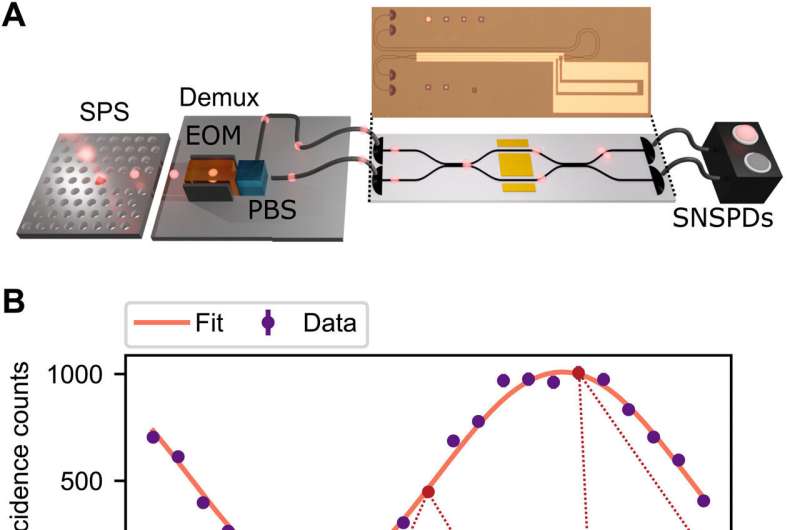
Scalable photonic quantum computing architectures require photonic processing devices. Such platforms rely on low-loss, high-speed, reconfigurable circuits and near-deterministic resource state generators. In a new report now published in Science Advances, Patrik Sund and a research team at the center of hybrid quantum networks at the University of Copenhagen, and the University of Münster developed an integrated photonic platform with thin-film lithium niobate. The scientists integrated the platform with deterministic solid-state single photon sources using quantum dots in nanophotonic waveguides.
They processed the generated photons within low-loss circuits at speeds of several gigahertz and experimentally realized a variety of key photonic quantum information processing functionalities on high-speed circuits; with inherent key features to develop a four-mode universal photonic circuit. The results illustrate a promising direction in the development of scalable quantum technologies by merging integrated photonics with solid-state deterministic photon sources.
Advances in quantum technologies with integrated photonics
Quantum technologies have progressively advanced in the past several years to enable quantum hardware to compete with and surpass the capabilities of classical supercomputers. However, it is challenging to regulate quantum systems at scale for a variety of practical applications and also to form fault-tolerant quantum technologies.
Photonics provide a promising platform to unlock scalable quantum hardware for long-range quantum networks with interconnections across multiple quantum devices and photonic circuits for quantum computing and simulation experiments. The high-quality photonic states and the fast, low-loss programmable circuits underlie the central idea of photonic quantum technologies to route and process applications. Researchers have recently developed solid-state quantum emitters such as quantum dots as near-ideal, high-efficiency sources of indistinguishable photons to realize on-demand single-photon sources.
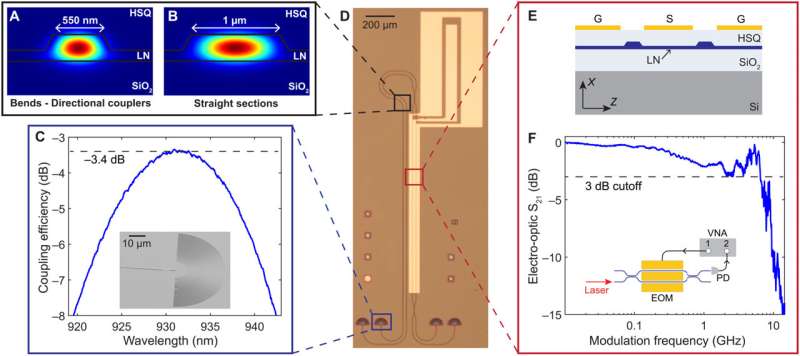
Photonic quantum information processing
During this study, Sund and colleagues focused on single-crystal lithium niobate thin films bonded on a silica insulating substrate as a promising platform due to their strong electrical-optical properties, high transparency and high index contrast to form integrated circuits. Since the transparency range of the materials varied, they were well-suited to function with a variety of solid-state quantum emitters, with compatibility to function at cryogenic temperatures.
In this work, the team described the development of multimode lithium niobate on insulator circuits for quantum information processing at the single photon level for the first time. They accomplished this by using the circuits to regulate and facilitate the function of quantum states of light emitted from a quantum dot single-photon source. The team injected single photons emitted by a waveguide-integrated quantum dot source into the lithium niobate optical circuit to show key functionalities underlying photonic quantum information processing, such as multiphoton interference on a reconfigurable universal unitary circuit.
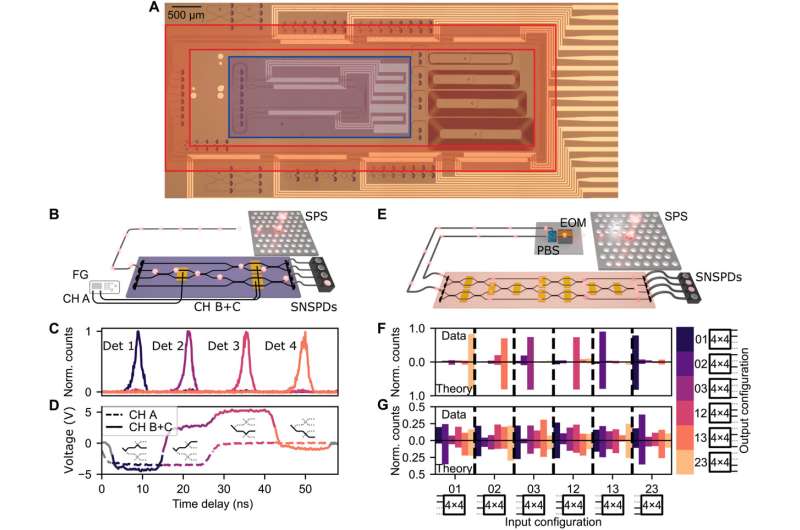
Integrated photonic platforms
Sund and colleagues illustrated the geometry used to realize single-mode lithium niobate on insulator waveguides. They implemented the optical circuits as rib waveguides via electron-beam lithography and argon etching on a lithium niobate film bonded on a silica-on-silicon substrate.
After etching them, they clad the waveguides with a hydrogen silsesquioxane layer and optically coupled the photonic integrated circuits to single-mode fibers for improved coupling efficiency for an active approach to interface fast optical switches and circuits with optical fibers. The materials scientists and engineers realized the electro-optically tunable waveguide circuits with a Mach-Zehnder interferometer complete with directional couplers and an electrically tunable phase-shifter. The team tested the high-speed performance of the modulators to assess capabilities of the constructed photonic integrated circuits.
On-chip quantum interference
During photonic quantum information processing, the researchers investigated the visibility of multiphoton quantum interference through on-chip Hong-Ou-Mandel experiments to test the performance of the platform for photonic quantum information processing. The materials scientists generated single photons by using a self-assembled indium arsenide quantum dot embedded in a photonic and electronic nanostructure.
The device contained a single-sided photonic crystal waveguide and a shallow-etched waveguide grating for efficient photon generation alongside a hetero-diode for electrical noise suppression and emission wavelength tuning. The scientists created a two-photon input state from a stream of single photons emitted by the quantum dot, while using an off-chip demultiplexer to separate pairs of consecutive photons, allowing simultaneous arrival of the photons at the chip. They then routed the photons towards single-photon detectors for coincidence detection.
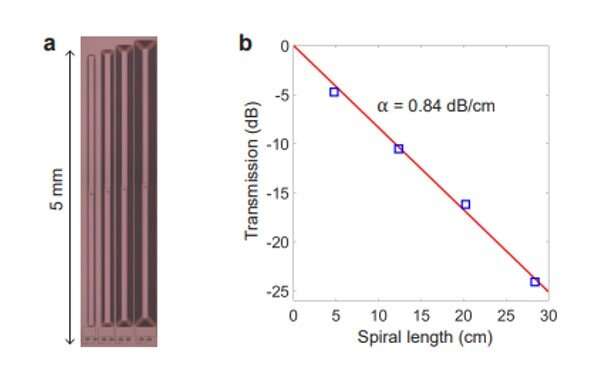
Integrated single-photon router
Fast photon routers are significant in photonic quantum computing, where they can be installed with multiple modes for multiplexing schemes in near-deterministic functions. Sund and colleagues made use of deterministic quantum emitters by rotating streams of emitted photons for networking schemes to reduce costs in photonic quantum computing architectures.
The research team integrated fast phase shifters on lithium niobate platforms and displayed on-chip photon routers for quantum-dot emitted photons. The demultiplexer in the experimental setup contained three fast electro-optic Mach Zehnder interferometer switches cascaded in a tree-shaped matrix network. The entire experimental circuit showed the promising potential of lithium niobate on the insulator platform to route photons produced by quantum dots.
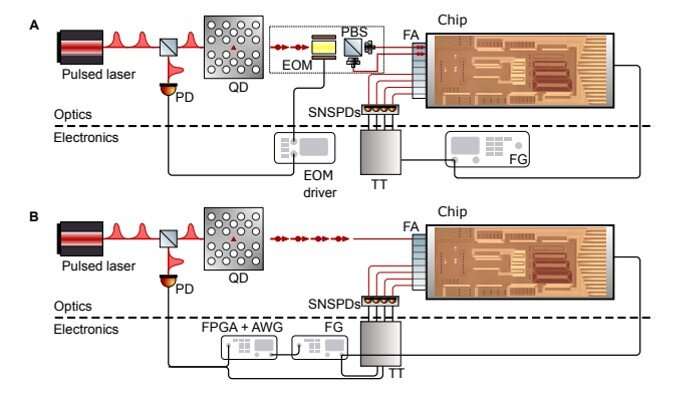
Universal four-mode interferometer
Multimode quantum photonic interferometers with programmable components are crucial to implementing core functionalities central to photonic quantum technologies such as multiphoton gates and fusion measurements to realize circuits for quantum computation experiments or for analog quantum simulation. The team explored the possibilities of quantum dot–lithium niobate on insulator platforms for this class of experiments and implemented an interferometer engineered from a network of six Mach Zehnder interferometers and ten phase modulators. The scientists then compared the measured distributions from experimental data with theoretical predictions.
Outlook
In this way, Patrik Sund and colleagues displayed the promise of lithium niobate on insulator platforms to process photons from emerging solid-state deterministic sources. The platform can be further optimized for scalable quantum technologies.
The team propose using a cladding with a higher refractive index during the experiments for optimized outcomes. The high-speed lithium niobate on insulator quantum processors provide a route to scale up quantum photonic technologies beyond photonic nanostructures—to achieve fault-tolerant photonic quantum computing at scale.
More information: Patrik I. Sund et al, High-speed thin-film lithium niobate quantum processor driven by a solid-state quantum emitter, Science Advances (2023). DOI: 10.1126/sciadv.adg7268
Han-Sen Zhong et al, Quantum computational advantage using photons, Science (2021). DOI: 10.1126/science.abe8770
Journal information: Science Advances , Science
© 2023 Science X Network




















